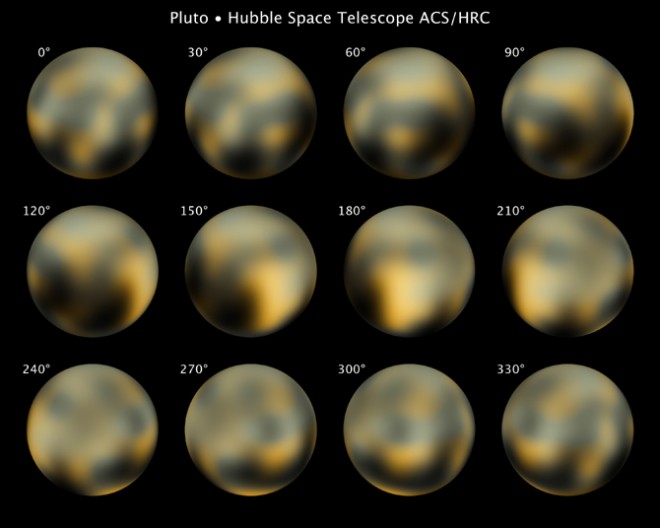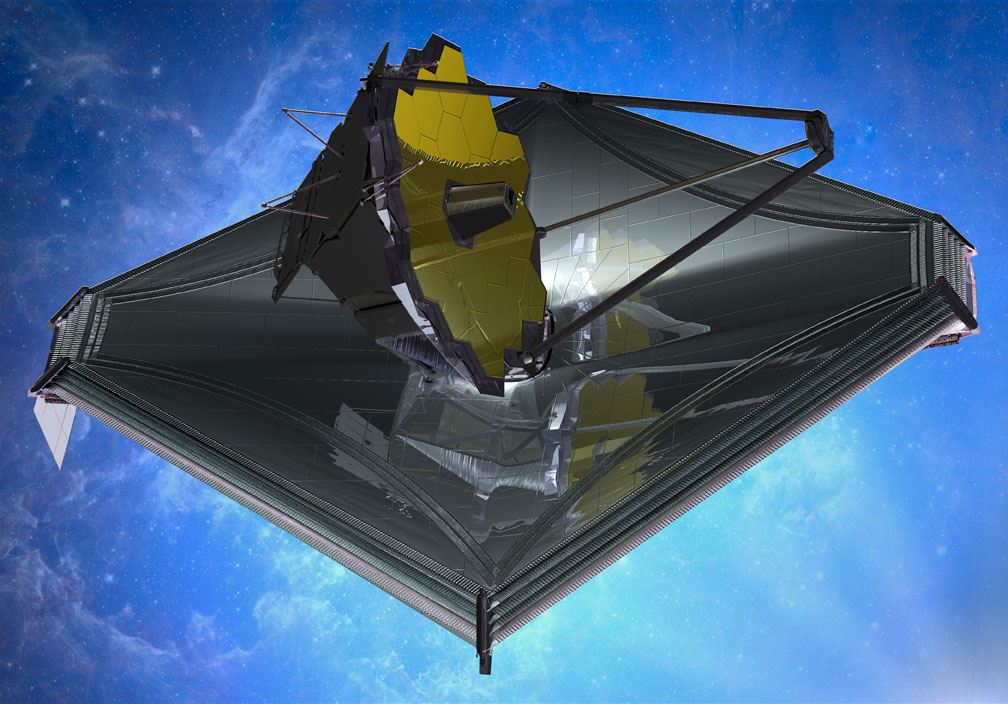Weather or not…
- By Maggie Masetti
- January 29, 2015
- Comments Off on Weather or not…
Recently I got a question about the James Webb Space Telescope and weather on exoplanets and how we know what type of weather is occurring. Essentially, do we take pictures of these planets and then interpret the weather from them?
The answer is – not exactly. Aside from the fact that JWST isn’t launching for a couple years, we don’t really have telescopes powerful enough to take images of exoplanets that would rival our photos of say, Jupiter. Exoplanets are extremely far away. Case in point – can you believe that we don’t even really know what Pluto really looks like? (Although we will soonish – New Horizons launched in 2006 and has been traveling for 8 long years – next year it will image Pluto.)
To understand this though, let’s back up a whole bunch of steps and start with the electromagnetic spectrum.
1) The electromagnetic spectrum
This may be a concept that is familiar to you, but if it’s not, it’s really the key to understanding everything else.
The optical spectrum ranges in color from reds and oranges up through blues and purples. Each of these colors actually corresponds to a different energy or wavelength of light. The light that our eyes cannot see also has names that are familiar to us: X-rays, radio waves, microwaves. The entire range of energies of light, including both light we can see and light we cannot see, is called the electromagnetic spectrum. It includes, from highest energy to lowest: gamma-rays, X-rays, ultraviolet, optical, infrared, microwaves, and radio waves.
Studying an object at different wavelengths of light gives us different information about that object. For example, looking at a galaxy in the optical, X-ray, infrared, and ultraviolet all give us different information. Young stars emit a lot of ultraviolet light. Hot gas around a galaxy gives off X-ray light. Each wavelength gives us a different piece of the puzzle – and when we put all these different observations together, they give us a more complete picture of what a galaxy is.
JWST sees mostly infrared light – and this is important to its mission because it can see things that Hubble (which sees mostly optical light, like the kind your eyes can see) cannot. There are things JWST will look at that only or mostly emit light at infrared wavelengths. This turns out to be key to looking at exoplanet atmospheres. We’ll talk about why after we discuss images and spectra.
You are probably most familiar with the concept of an “image.” When you take a picture with your camera, you are capturing the distribution of light coming into the shutter. Similarly, telescope optics work by either reflecting light with mirrors or refracting it with lenses into an eyepiece or a camera. Either way, the image created from light from space gets magnified, allowing us to capture spatial images of the sky.
Spectroscopy is the science of measuring and graphing the intensity of light at different energies or wavelengths.
Spectra of stars can give us information about their composition, since each element emits light at a characteristic energy and the presence of an element will be evident as peaks in the spectrum.
For example, here is a graphic showing a spectra of an exoplanet and how the spectra shows us the presence of sodium in its atmosphere:
3) How does JWST see the light from exoplanets since they are planets and not stars and don’t really actively emit light themselves?
When a planet passes in front of a star, the star light passes through the planet’s atmosphere. If the planet has sodium in its atmosphere, the spectra of the star, added to that of the planet, will have what we call an “absorption line” in the place in the spectra where would expect to see sodium – this is shown in the graphic just above. I mentioned that different elements emit light at characteristic energies. This works in reverse, too – elements absorb light at those same characteristic energies.
With infrared observations, it turns out that it’s just ever so slightly different – we actually compare measurements of the star plus the planet, to observations of just the star.
4) Summary
A telescope like JWST sees infrared light and can collect light from exoplanets and their stars and can make a graph of that light. In that graph we’ll see characteristic lines from elements and molecules in its atmosphere. And that way we will know what the planet’s atmosphere is made of; maybe we can find a planet that has an atmosphere like Earth’s.
5) How does that tell us about the weather on the planet?
One technique for learning about extrasolar planet weather is mapping the surface temperature profile. This video shows how the technique works.
Newer near-infrared data from Hubble, however, gave us more precise picture. Hubble is sensitive enough to have detected absorption features in the planet’s atmosphere if these heavy molecules were present. But the spectrum was featureless. This ruled out the scenario of a cloud-free atmosphere dominated by molecules water, methane, carbon monoxide, nitrogen or carbon dioxide. Instead the data showed clear evidence of clouds. Made of what though? Models of super-Earth atmospheres predict possibly potassium chloride or zinc sulfide clouds, possibly at 450 degrees Fahrenheit!
Said Laura Kreidberg of the University of Chicago, lead author of a paper on this planet for Nature, “We really pushed the limits of what is possible with Hubble to make this measurement. This advance lays the foundation for characterizing other Earths with similar techniques.”
More related articles:
- Astronomers Create Weather Map of Exoplanet WASP-43b
- GJ 1214b, GJ 436b: Astronomers Reveal Weather on Two Exoplanets
- How NASA’s James Webb Space Telescope Could Spot Earth-like Planets
- 5 Ways to Find a Planet (JPL’s Planetquest)
- We Still Have No Clue What Super-Earths Are Made Of
- What does the next generation telescope need to detect life?






